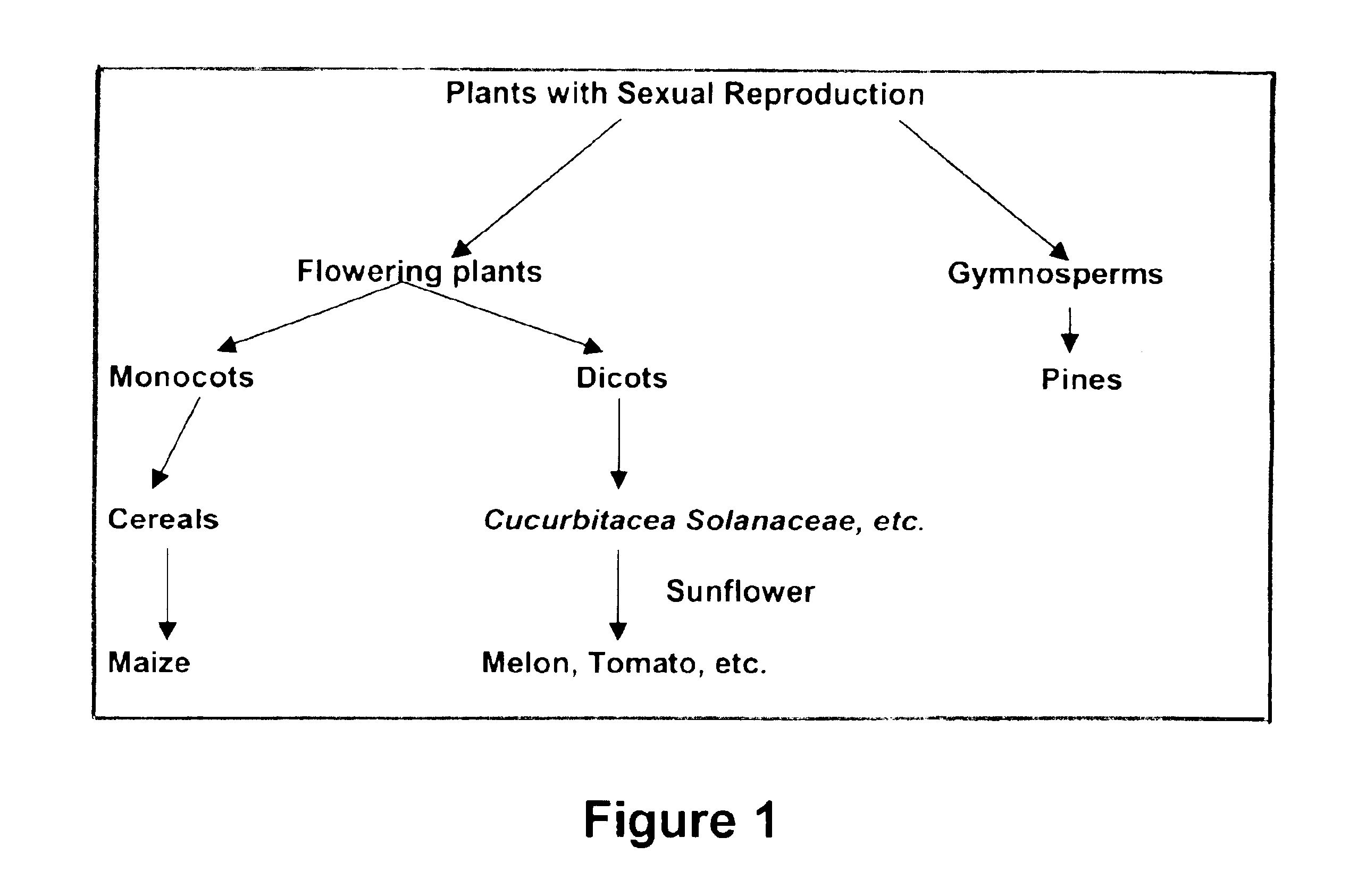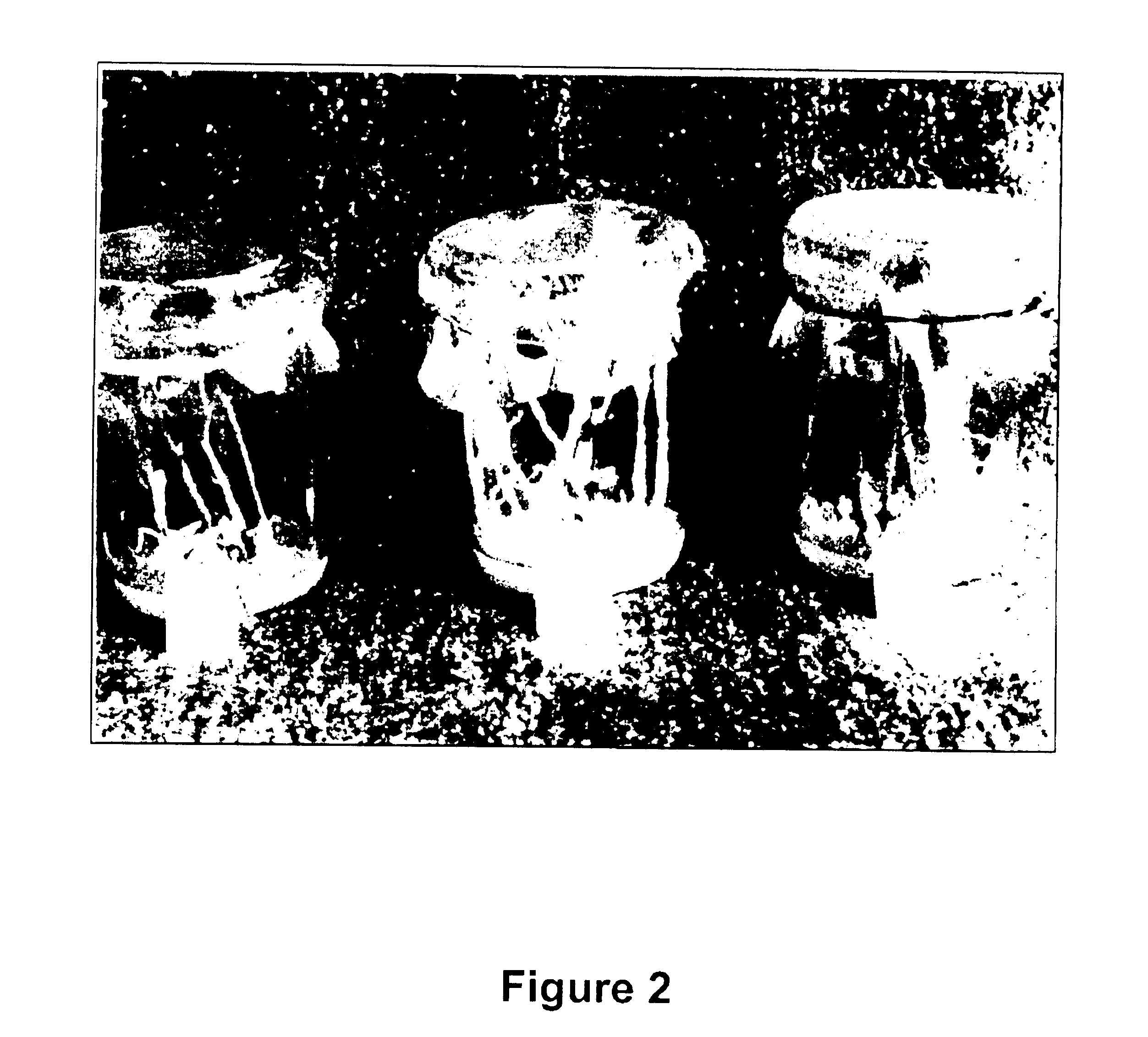Pollen-mediated method for transformation of maize, tomato or melon
a technology of maize and tomato, applied in the field of plant genetic transformation, can solve the problems of insufficient reports on methods for the transformation of monocotyledons such as maize, the inability to achieve stable genetic transformation, and the inability to produce fertile maize plants. , to achieve the effect of high efficiency, low cost and high frequency of maize transformation
- Summary
- Abstract
- Description
- Claims
- Application Information
AI Technical Summary
Benefits of technology
Problems solved by technology
Method used
Image
Examples
example 1
Genetic Transformation in Maize
Fertile transgenic maize plants were obtained by introducing the bacterial nptII gene encoding kanamycin resistance into zygotes by the pollination-fecundation process. The genomic copy of the gene Sh has been transferred as well and its inheritance was detected in the progeny of stable transformants.
Three different plasmids were used for gene transfer experiments: pCT2T3 and pGV1SOI which carry the NOS promoter expressing the nptll gene as a selectable marker; the third plasmid, pBR322::Sh, contained a cloned genomic copy of Sh Maize stocks used in the experiments were MK159, C22, W64B, Rad391139 and a multi-marker line (wsp31glg12v4; wx sh). DNA was applied to silks of recipient plants as follows: a certain amount of fresh pollen of a recipient plant, taken in time of full flowering, was first immersed in the DNA solution. Then, immediately the paste-like pollen / DNA solution was placed onto the silks of the same recipient plant, thus producing self-p...
example 2
Silicon Carbide Fiber-Mediated Genetic Transformation in Maize
Maize transformation via the pollination pathway was initiated in order to improve the pollination-based transformation technique. Several plasmids with different selectable markers were used in pollination experiments of 600 maize plants of three different lines. We used the following genes as selectable markers:
(i) neomycin phosphotransferase (npt II) gene encoding resistance to the antibiotic kanamycin (in the plasmid pBI121 which also contains the GUS reporter gene);
(ii) phosphinothricin acetyltransferase gene (bar) providing resistance to the herbicide bialaphos in the plasmid pBARGUS. The advantage of this construct is that it contains the Adhl gene intron of maize which was shown to increase the expression in maize; and
(iii) anthocyanin regulators (C1) from maize controlling anthocyanin production (pAL69).
The study was performed using two maize lines: A619 and T403. We have tested the methods of DNA application usi...
PUM
| Property | Measurement | Unit |
|---|---|---|
| length | aaaaa | aaaaa |
| diameter | aaaaa | aaaaa |
| diameter | aaaaa | aaaaa |
Abstract
Description
Claims
Application Information
 Login to View More
Login to View More - R&D
- Intellectual Property
- Life Sciences
- Materials
- Tech Scout
- Unparalleled Data Quality
- Higher Quality Content
- 60% Fewer Hallucinations
Browse by: Latest US Patents, China's latest patents, Technical Efficacy Thesaurus, Application Domain, Technology Topic, Popular Technical Reports.
© 2025 PatSnap. All rights reserved.Legal|Privacy policy|Modern Slavery Act Transparency Statement|Sitemap|About US| Contact US: help@patsnap.com



